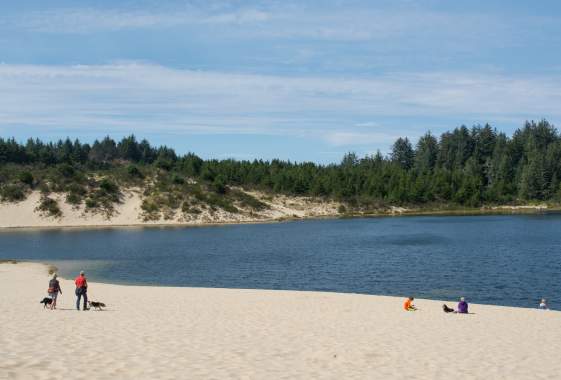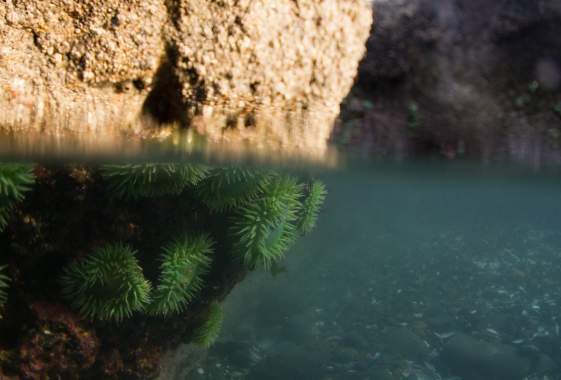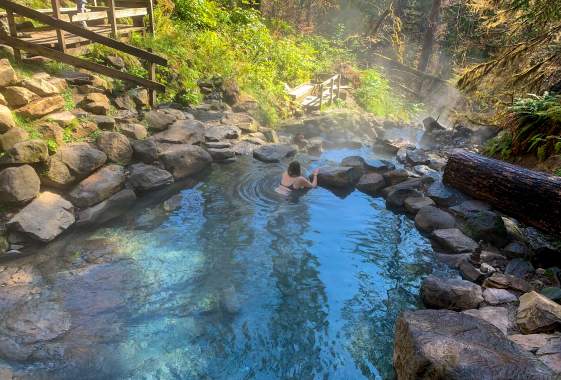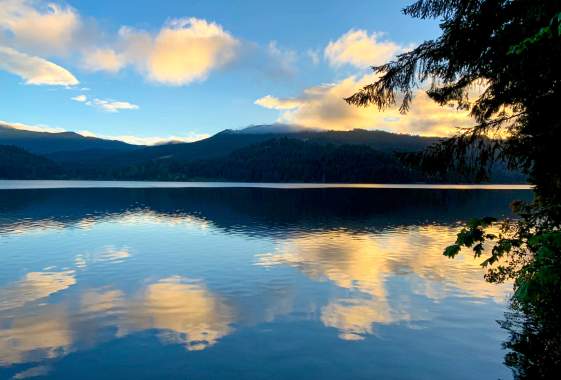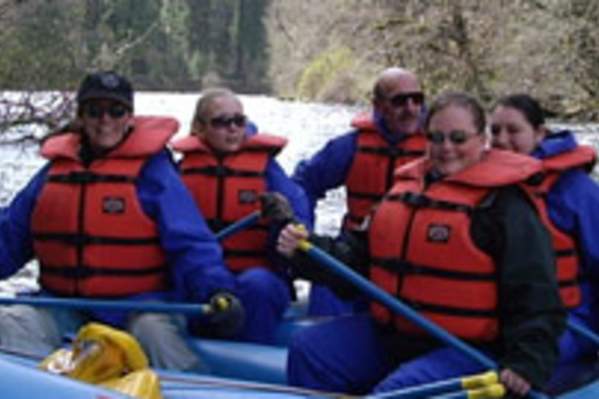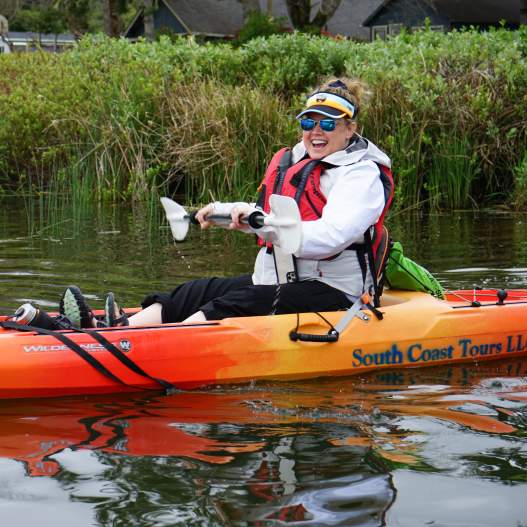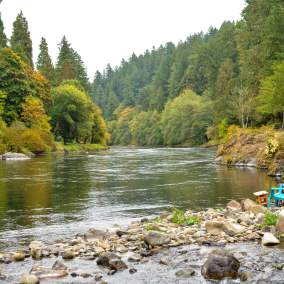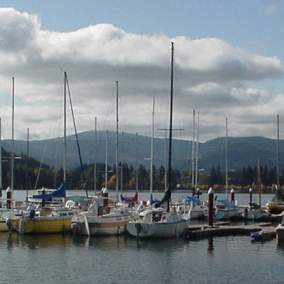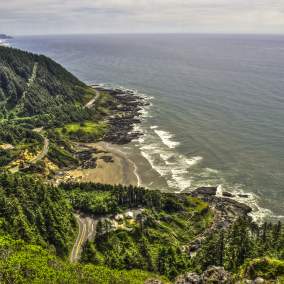Playing in the water can be the best part of summer — and Oregon's got plenty of the wet stuff! From lake shores to shady creeks, there are wonderful inviting places to cool off and feel good.
But it's not fun if somebody gets hurt. So please take care of yourself and those around you with a few simple safety precautions in, on or around the water.
Basic Water Awareness
-
Have the right equipment
Visit an outfitter to make sure you have the gear you need appropriate for the sport and the prevailing conditions. For example, if you are paddleboarding in moving water, a quick-release tether is recommended so you do not become entangled. Going with an experienced guide is also a good idea.
-
Lakes, rivers, creeks and pools are always changing
Just because you swam here, or jumped in here last year, or even last week, doesn't mean it is the same as it was. Water depths change, currents change and debris drift in and out. Throughly investigate the body of water before swimming or floating, and use caution. And some places are best appreciated from the shore.
-
Beware of what you can't see
Rocks and logs can lurk below and even in clear water depth can be deceptive—and currents can be surprisingly strong beneath the surface. Moving water only knee high is capable of knocking you off your feet.
-
It's slippery!
Rocks may be slick or shift underfoot. Move slowly when crossing rocky beaches or fording shallow streams. Test each rock before putting your weight on it—no one wants a sprained ankle or an unexpected dunking! Water shoes may help avoid stubbed toes. Flip-flops or loose sandals are not appropriate.
-
Swim with a buddy
This is water safety 101. And always let someone know what your water sport plans are and where you are going.
-
Watch your children
Children move fast, and can easily wade or fall into water that is too deep or too swift within seconds. When your family is playing in and around the water—whether at a swimming hole, on the docks, in the boat or at the beach—put away your phone. Enjoy your music or conversations with your eyes on your children.
-
Share the water
Listen for other watercraft, and paddle closer together in groups when you hear a motorboat approaching. Motorboats need deeper water to safely operate and pass.
-
Stay sober
Alcohol and cannabis cloud judgement and slow reaction time. It is important to keep your head clear around water. Operating watercraft under the influence is against the law. And smoking cannabis in public is still illegal, even if it is available for purchase in Oregon.
Wear a Life Jacket

When you are in and around water, wearing a life jacket could save your life — even if you are a competent swimmer. Circumstances where a life jacket should be worn include boating, paddling, rafting or wading and swimming in moving water. Boats are required to carry a life jacket for every passenger — but you have to put it on for it to work!
Children ages 12 and under are required to wear life jackets on boats. It's a good idea on docks as well.
Visit the Oregon State Marine Board website for details on where and when to wear a life jacket, and how to ensure the proper fit and style for your activity.
It is important to wear a life jacket when you are recreating around the water, and for children it is the law
Understanding Permits

The most common permits you may need for water-related actives include parking permits or park passes, fishing or shellfish licenses, boater education cards (for 10 horsepower or greater watercraft) and waterway access permits (on non-motorized watercraft ten feet or longer). To determine if you need a waterway access permit, visit the Oregon State Marine Board.
Permits are important for a lot of reasons. The fees paid fund maintenance projects and educational programs that increase accessibility to natural destinations (like signage, parking lots, trash services, rest rooms and trail maintenance) and promote the preservation of natural spaces. Permits also help land managers track usage and protect sensitive areas from overuse. Along with some permits, educational training is available.
What is Algae Bloom?
When water levels are low and weather is warm, some still lakes, ponds and waterways can develop toxic algae. This green or colorful scum is harmful to pets and people — please don't swim, fish or recreate in water impacted with bloom.
While this condition can impact any body of water, our most vulnerable and popular water destinations to watch include Fern Ridge Reservoir, Dexter Reservoir, Dorena Reservoir, Fall Creek Reservoir, Hills Creek Reservoir, Cougar Reservoir, Cottage Cover Reservoir, Siltcoos Lake, Golden Garden Ponds, Walterville Pond and Odell Lake. Check with the Oregon Health Authority for current advisories.
Manners & Mindfulness
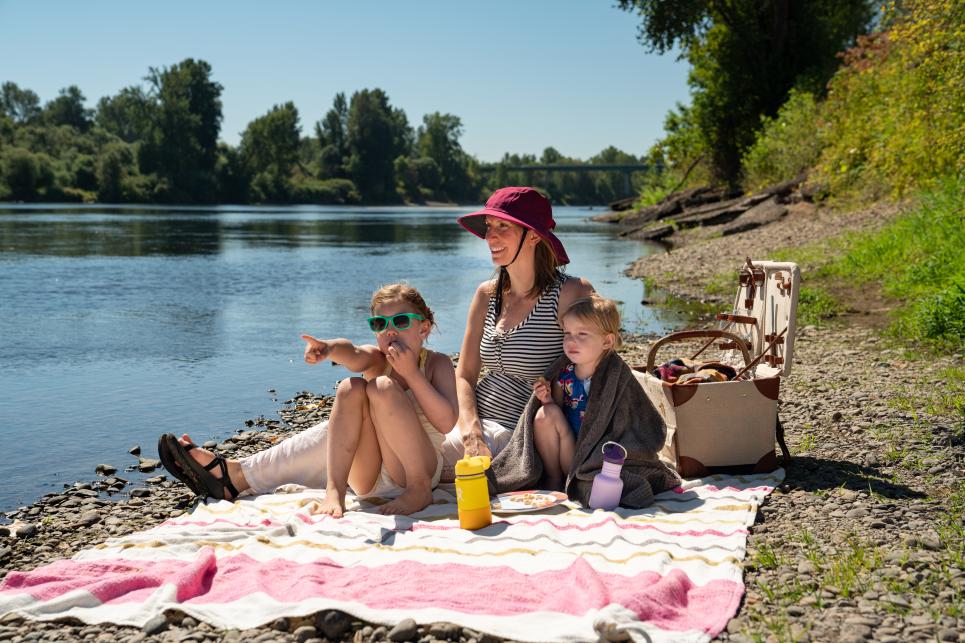
Follow the Leave No Trace principles to help preserve the natural environment and ensure others will be able to likewise enjoy the same place in the future.
Other tips include:
- Observe posted signage of closures or cautions.
- Respect private property and only enter land that is open to the public.
- Stay on paths to avoid erosion issues and trampling habitats.
- Be prepared with clothing layers, sun protection, water and food. See our Adventure Checklist for guidance.
- Pack out what you pack in. Do not leave behind garbage or other items.
- Follow current guidelines on fire safety.
- Leave nature as you found it — refrain from stacking rocks, carving trees or making any imprint that you were there.
- Be respectful of others seeking a quiet experience in nature. Save your loud music for the ride home.
- Please Take Care Out There!

